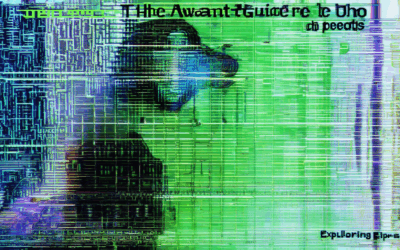Understanding the intricacies of hip hop beats analysis is crucial for music producers, DJs, and enthusiasts alike who seek to unlock the secrets behind infectious and memorable tracks. At its core, hip hop beats analysis involves dissecting the fundamental components that comprise a hip hop instrumental, including drums, melody, harmony, rhythm, and instrumentation. By examining these key elements, one can gain insight into the creative process behind iconic hip hop songs and develop their own unique sound.

Key Elements of a Hiphop Beat
The foundation of a hiphop beat typically consists of heavy kicks, punchy snares, sizzling hi-hats, and deep 808s.
- Kicks: Provide the low-end foundation and rhythmic pulse of the beat, often created using a combination of drum machines and sampled kick drums.
- Snares: Add crispness and definition to the rhythm, typically produced using a snare drum sample or a combination of samples and drum machine programming.
- Hihats: Create a sense of movement and energy, often used to accentuate the off-beat rhythms and add texture to the overall sound.
- Deep 808s: Add depth and weight to the low end, often used to create a sense of tension and release.
Percussion Loops and Additional Elements
Music producers can enhance the beat by adding percussion loops, claps, bass hits, and other sounds to create interest and variety.
- Percussion Loops: Add repetitive patterns and textures to the beat, often created using drum machine programming or sampled loops.
- Claps: Add a human touch and emphasize certain rhythmic accents, often recorded live or sampled from vinyl records.
- Bass Hits: Add low-end weight and emphasis to the rhythm, often created using a combination of synthesizers and sampled basslines.
- Other Sounds: Experiment with additional elements such as FX processing, ambient pads, and found sounds to create a unique sonic landscape.
Abstract Hip Hop Influences
As a producer, I draw inspiration from the avant-garde production techniques, spoken word, jazz, funk, and electronic influences found in abstract hip hop.
- Avant-Garde Production Techniques: Experiment with unconventional sounds, effects, and recording methods to push the boundaries of traditional hip hop production.
- Spoken Word: Incorporate lyrical elements that blend poetry, storytelling, and social commentary to create a unique narrative voice.
- Jazz and Funk Influences: Draw upon the harmonic complexity and rhythmic sophistication of jazz and funk to add depth and nuance to the beat.
- Electronic Influences: Incorporate synthesized sounds, distorted textures, and other electronic elements to create a futuristic and experimental sound.
Theory of Hiphop Beats
Hiphop music typically employs a regular backbeat snare pattern, with the snare sound occurring on beats 2 and 4.
- Synchronization plays a crucial role in hiphop beats, particularly with the snare sound, which is often played off-beat or in between the primary beats.
- This technique is known as syncopation, and it adds complexity and interest to the rhythm.
- In addition to syncopation, hiphop producers frequently employ other rhythmic devices, such as polyrhythms and groove variations, to create a rich and dynamic sound.
Abstract Hip Hop and the Evolution of Hiphop Beats
As a platform dedicated to exploring the world of hiphop music, art, and culture, Abstract Hip Hop has been at the forefront of documenting the evolution of hiphop beats.
- We have featured in-depth articles on the latest trends in the abstract and experimental hiphop scene, highlighting innovative production techniques and emerging artists.
- Our blog posts and artist interviews offer readers a unique insight into the underground hiphop movement, showcasing the diversity and creativity of hiphop producers and musicians.
- By emphasizing avant-garde production techniques, spoken word, jazz, funk, and electronic influences, we aim to inspire and educate our audience about the ever-changing landscape of hiphop music.
Competitors and Industry Trends
While there are several notable platforms and labels that contribute to the hiphop community, we recognize the importance of staying true to our own vision and values.
- We acknowledge the influence of other prominent hiphop outlets, such as Pitchfork and Resident Advisor, which have helped shape the contemporary hiphop landscape.
- However, we remain committed to our mission of promoting and celebrating the unique aspects of abstract and experimental hiphop, while fostering a sense of community among our readers and contributors.

The Five Essential Elements of Hiphop Beats
I’m excited to dive into the fundamental components that make up any hiphop beat.
-
Theme
-
Melody
-
Rhythm
-
Harmony
-
Sounds
-
Structure
A theme is the underlying idea or concept that drives the creation of a hiphop beat. It can be inspired by personal experiences, emotions, or social issues. A well-defined theme helps to guide the producer’s creative decisions and gives the beat a sense of direction and purpose.
Melody refers to the sequence of pitches heard in a hiphop beat. It can be created using synthesizers, samplers, or live instruments. A catchy melody can make a hiphop beat memorable and engaging, while a dull or repetitive melody can detract from its overall impact.
Rhythm is the pattern of duration and accentuation of sounds in a hiphop beat. It provides the foundation for the melody and harmony, and can greatly influence the mood and energy of the track. A strong rhythm can make a hiphop beat feel energetic and driving, while a weak rhythm can make it sound flat and uninspired.
Harmony refers to the combination of multiple pitches sounding simultaneously in a hiphop beat. It adds depth and complexity to the melody, and can create a sense of tension and release. A well-crafted harmony can elevate a hiphop beat from good to great, while a poorly executed harmony can make it sound amateurish.
Sounds refer to the individual elements that make up a hiphop beat, such as drums, bass, percussion, and FX. Each sound has its own unique character and function, and together they work to create a cohesive and engaging sonic landscape. A well-chosen selection of sounds can make a hiphop beat stand out, while a poor choice can make it sound dated or clichéd.
Structure refers to the organization and arrangement of the various elements in a hiphop beat. It includes the intro, verse, chorus, bridge, and outro, and determines how the listener experiences the music. A well-designed structure can make a hiphop beat feel dynamic and engaging, while a poorly constructed structure can make it sound disjointed and confusing.

The 5 Main Elements of Hiphop
I’m excited to dive into the core components that make up the rich and diverse world of hiphop.
-
Music
Hiphop music is characterized by its strong rhythmic beats, lyrical flow, and often socially conscious lyrics. From its early days in the Bronx to its global popularity today, hiphop has evolved into various sub-genres, including gangsta rap, trap, drill, and conscious rap.
As a fan of hiphop, I appreciate how artists like Kendrick Lamar and J. Cole push the boundaries of storytelling through their music, tackling complex issues like racism, police brutality, and social inequality.
When it comes to discovering new hiphop music, I recommend checking out platforms like SoundCloud and Bandcamp, which feature emerging artists and underground scenes.
-
Dance
Hiphop dance is a high-energy expression of self-expression and creativity. From breaking and popping to locking and voguing, these styles have been popularized by legendary dancers like Richard “Crazy Legs” Colón and Michael Jackson.
As someone who loves watching hiphop dance battles, I’m always impressed by the athleticism and artistry displayed by dancers like Crazy Legs and his Rock Steady Crew.
If you’re interested in learning more about hiphop dance, I suggest checking out online tutorials and classes offered by reputable instructors like Matt Steffanina and Willdabeast Adams.
-
Art and Visual Culture
Hiphop art and visual culture encompass a wide range of creative expressions, from graffiti and street art to graphic design and fashion. Artists like Jean-Michel Basquiat and Keith Haring have become household names, while contemporary artists like KAWS and Takashi Murakami continue to push the boundaries of what’s possible.
As a fan of hiphop art, I appreciate how it reflects the culture’s themes of identity, community, and social justice. Whether it’s a mural in a urban neighborhood or a high-end fashion collaboration, hiphop art always speaks to something deeper and more meaningful.
For those interested in exploring hiphop art further, I recommend visiting museums like the Museum of Contemporary Art in Los Angeles or attending festivals like the Brooklyn Street Art Festival.
-
Literature and Poetry
Hiphop literature and poetry are essential components of the culture, providing a platform for artists to express themselves through words. From classic works like Gil Scott-Heron’s “The Revolution Will Not Be Televised” to modern-day poets like Warsan Shire and Phil Kaye, hiphop literature continues to inspire and challenge us.
As someone who loves reading hiphop literature, I’m constantly amazed by the power of language to convey emotions, tell stories, and spark conversations.
For those interested in exploring hiphop literature further, I recommend checking out anthologies like “The BreakBeat Poets” or attending literary events like the National Book Festival.
-
Culture and Identity
Hiphop culture and identity are deeply intertwined, reflecting the experiences and perspectives of marginalized communities around the world. From its origins in African American and Latino neighborhoods to its global spread today, hiphop has become a powerful symbol of resistance, resilience, and self-expression.
As a fan of hiphop culture, I appreciate how it celebrates diversity, inclusivity, and individuality. Whether it’s through music, dance, art, or literature, hiphop always speaks to something fundamental and universal.
For those interested in exploring hiphop culture further, I recommend attending festivals like Afropunk or listening to podcasts like “The Read,” which offer insightful discussions and analysis of the culture.
The Four Basics of Hiphop
I’m excited to dive into the roots of rap and explore the four pillars of hip hop culture.
-
MCing (Rapping)
Rap is a powerful form of self-expression, allowing artists to share their thoughts, emotions, and experiences through lyrics. From Kendrick Lamar’s storytelling to J. Cole’s introspection, rap has evolved into a diverse and dynamic genre.
As a fan of abstract hip hop, I appreciate how artists like MF DOOM and Aesop Rock push the boundaries of lyrical complexity and sonic experimentation.
Check out our Artist Spotlight on MF DOOM to learn more about his innovative approach to rap.
-
DJing (Turntablism)
From Grandmaster Flash to DJ Shadow, turntablists have revolutionized the way we experience music. By manipulating vinyl records and CDs, DJs can create intricate beats, scratches, and samples that elevate the energy of a live performance.
Abstract hip hop often incorporates elements of electronic music, making turntablism a crucial aspect of the genre. Our article on electronic influences in hip hop explores this intersection in more detail.
-
Breakdancing (B-boying/B-girling)
Breakdancing is a physically demanding and highly expressive dance style that originated in the 1970s. B-boys and b-girls showcase their skills through intricate footwork, headspins, and power moves, often set to hip hop beats.
Our community at Abstract Hip Hop celebrates the athleticism and creativity of breakdancing. Check out our breakdancing tips for beginners to get started with this exciting dance style.
-
Graffiti Art
Graffiti art is a visual representation of hip hop culture, often serving as a means of self-expression and social commentary. From wheatpaste posters to large-scale murals, graffiti artists bring their messages to life through vibrant colors and bold typography.
Abstract hip hop frequently incorporates elements of street art, making graffiti a vital part of the genre’s aesthetic. Learn more about the intersection of graffiti and hip hop in our article on graffiti and hip hop.
These four pillars – MCing, DJing, breakdancing, and graffiti art – form the foundation of hip hop culture. As a fan of abstract hip hop, I’m constantly inspired by the creativity and innovation that emerges from this rich heritage.

The Father of Hiphop
DJ Kool Herc is widely regarded as the founding father of hip hop.
-
Kool Herc made history in 1973 when he and his sister hosted the Back to School Jam in the recreation room of their Bronx apartment building at 1520 Sedgwick Avenue.
-
This event marked the beginning of hip hop culture, which would go on to influence music, dance, fashion, and art around the world.
-
Kool Herc’s innovative DJing style, which emphasized extended breaks and rhythmic scratching, helped to lay the foundation for future generations of DJs and producers.
-
His contributions to hip hop have been recognized through numerous awards and accolades, cementing his status as a true pioneer of the genre.
Other Influential Figures in Early Hip Hop
-
Afrika Bambaataa, a DJ and MC from the Bronx, played a crucial role in developing the Zulu Nation, a collective of DJs, MCs, and breakdancers who helped to spread hip hop culture throughout New York City.
-
Grandmaster Flash, a pioneering DJ from the Bronx, developed the technique of backspinning records, which allowed him to extend breaks and create new rhythms.
-
The Cold Crush Brothers, a group of MCs from the Bronx, were known for their energetic live performances and lyrical dexterity, helping to establish hip hop as a viable musical genre.
Abstract Hip Hop’s Take on the Genre
At Abstract Hip Hop, we’re passionate about exploring the diverse and ever-evolving world of hip hop music, art, and culture.
-
We feature in-depth articles, artist interviews, and music reviews that showcase the latest trends and innovations in the genre.
-
Our platform provides a space for artists, producers, and fans to share their perspectives and experiences, fostering a sense of community and connection among hip hop enthusiasts.
-
We’re committed to highlighting the creativity, diversity, and inclusivity that define hip hop culture, and we’re excited to see where this vibrant and dynamic genre takes us next.




0 Comments